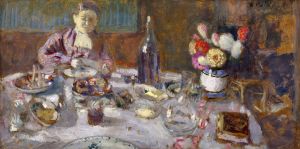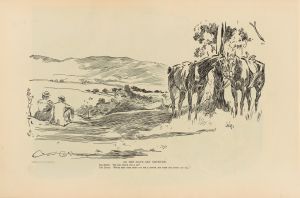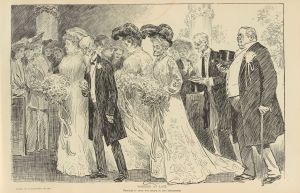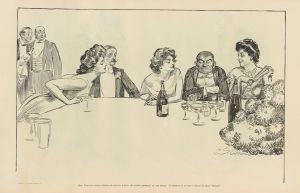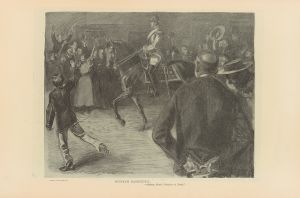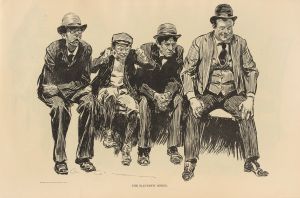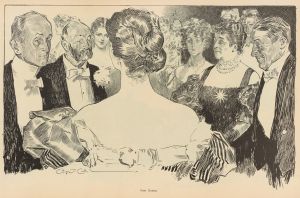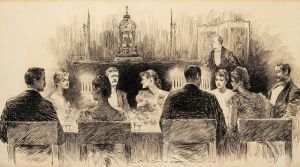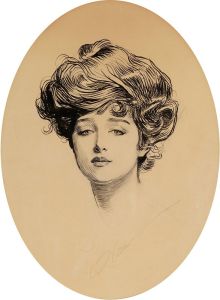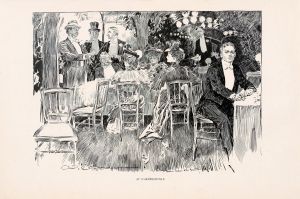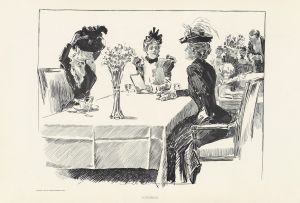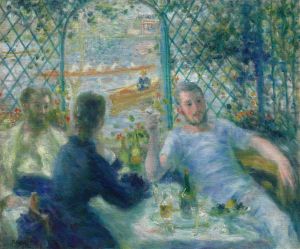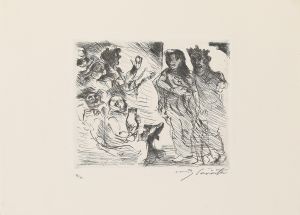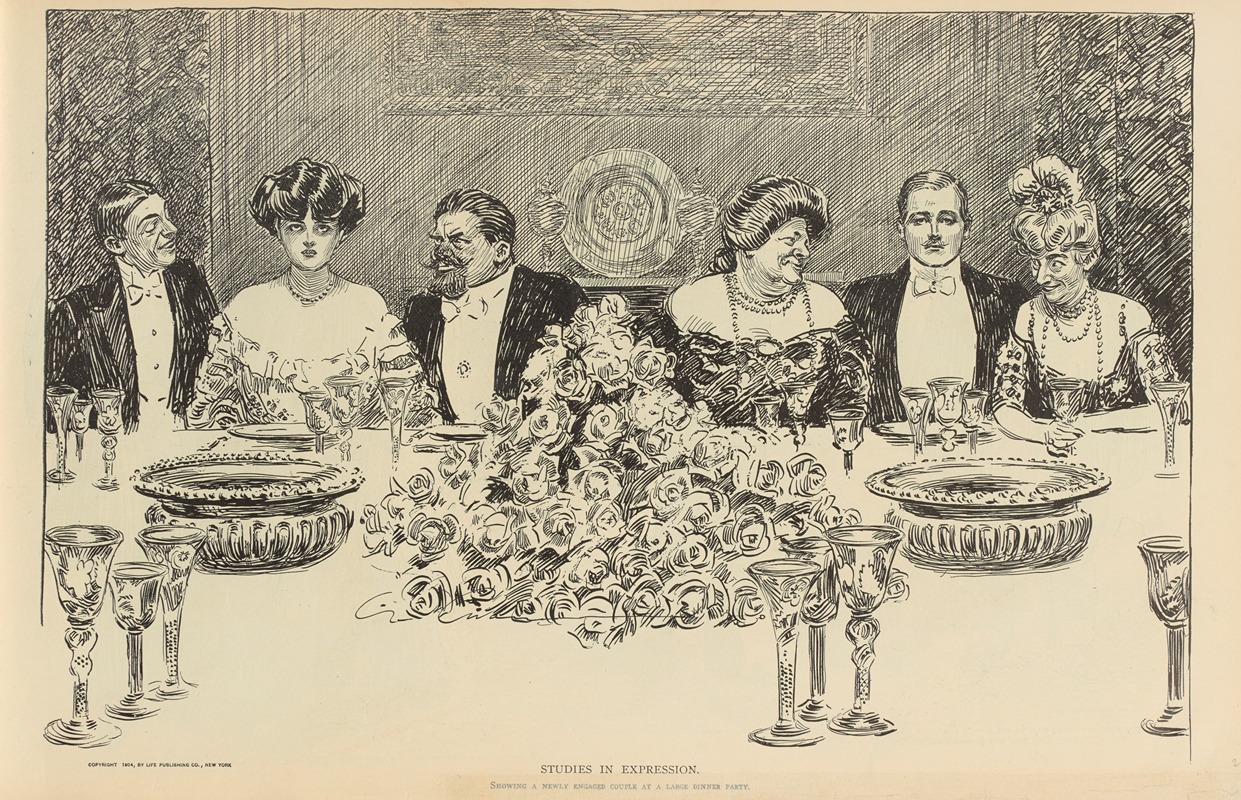
Studies in expression. Showing a newly engaged couple at a large dinner party
A hand-painted replica of Charles Dana Gibson’s masterpiece Studies in expression. Showing a newly engaged couple at a large dinner party, meticulously crafted by professional artists to capture the true essence of the original. Each piece is created with museum-quality canvas and rare mineral pigments, carefully painted by experienced artists with delicate brushstrokes and rich, layered colors to perfectly recreate the texture of the original artwork. Unlike machine-printed reproductions, this hand-painted version brings the painting to life, infused with the artist’s emotions and skill in every stroke. Whether for personal collection or home decoration, it instantly elevates the artistic atmosphere of any space.
Charles Dana Gibson was a prominent American illustrator, best known for his creation of the "Gibson Girl," an iconic representation of the American woman at the turn of the 20th century. His illustrations captured the social dynamics and cultural nuances of his time, often with a touch of humor and satire. One of his notable works is "Studies in Expression. Showing a Newly Engaged Couple at a Large Dinner Party."
This illustration is part of a series that explores human expressions and social interactions. Gibson's work often appeared in popular magazines of the era, such as Life, Harper's Weekly, and Scribner's, where his keen observations of society were widely appreciated. "Studies in Expression" is a classic example of his ability to depict the subtleties of human emotion and social situations.
In "Showing a Newly Engaged Couple at a Large Dinner Party," Gibson captures a moment that is both intimate and public. The scene likely portrays a dinner party, a common social gathering of the time, where a newly engaged couple is the center of attention. Gibson's illustration style is characterized by its detailed line work and the expressive faces of his subjects. The expressions of the couple and the surrounding guests are meticulously rendered, showcasing Gibson's skill in conveying complex emotions through simple black-and-white drawings.
The setting of a dinner party is significant, as it reflects the social customs and expectations of the upper-middle-class society in the early 1900s. Such gatherings were not only about dining but also about social networking and displaying one's social status. The engagement of a couple would have been a topic of interest and conversation, making it a fitting subject for Gibson's exploration of expression.
Gibson's work often included a satirical edge, and "Studies in Expression" is no exception. The illustration may subtly critique the societal pressures and expectations placed on individuals, especially women, during engagements and social events. The "Gibson Girl" herself was a symbol of the changing role of women, embodying both traditional femininity and a new sense of independence and confidence.
The popularity of Gibson's illustrations during his lifetime was immense, and his work continues to be studied for its artistic merit and social commentary. "Studies in Expression" is a testament to his ability to capture the essence of human interaction and the societal norms of his time. Through his art, Gibson provided a window into the world of the early 20th century, offering insights that remain relevant to this day.
Overall, Charles Dana Gibson's "Studies in Expression. Showing a Newly Engaged Couple at a Large Dinner Party" is a fine example of his talent in illustrating the complexities of social life and human emotion, making it a valuable piece of cultural history.





